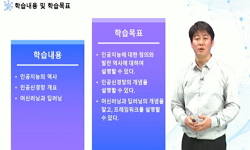On-device AI technology, which can operate AI models at the edge devices to support real-time processing and privacy enhancement, is attracting attention. As intelligent IoT is applied to various industries, services utilizing the on-device AI technol...
http://chineseinput.net/에서 pinyin(병음)방식으로 중국어를 변환할 수 있습니다.
변환된 중국어를 복사하여 사용하시면 됩니다.
- 中文 을 입력하시려면 zhongwen을 입력하시고 space를누르시면됩니다.
- 北京 을 입력하시려면 beijing을 입력하시고 space를 누르시면 됩니다.

지능형 엣지 컴퓨팅 기기를 위한 온디바이스 AI 비전 모델의 경량화 방식 분석 = Analysis on Lightweight Methods of On-Device AI Vision Model for Intelligent Edge Computing Devices
한글로보기https://www.riss.kr/link?id=A108966604
- 저자
- 발행기관
- 학술지명
- 권호사항
-
발행연도
2024
-
작성언어
Korean
- 주제어
-
등재정보
KCI등재
-
자료형태
학술저널
-
수록면
1-8(8쪽)
- DOI식별코드
- 제공처
-
0
상세조회 -
0
다운로드
부가정보
다국어 초록 (Multilingual Abstract)
On-device AI technology, which can operate AI models at the edge devices to support real-time processing and privacy enhancement, is attracting attention. As intelligent IoT is applied to various industries, services utilizing the on-device AI technology are increasing significantly. However, general deep learning models require a lot of computational resources for inference and learning. Therefore, various lightweighting methods such as quantization and pruning have been suggested to operate deep learning models in embedded edge devices. Among the lightweighting methods, we analyze how to lightweight and apply deep learning models to edge computing devices, focusing on pruning technology in this paper. In particular, we utilize dynamic and static pruning techniques to evaluate the inference speed, accuracy, and memory usage of a lightweight AI vision model. The content analyzed in this paper can be used for intelligent video control systems or video security systems in autonomous vehicles, where real-time processing are highly required. In addition, it is expected that the content can be used more effectively in various IoT services and industries.
동일학술지(권/호) 다른 논문
-
IoT 기반 도시철도 재난 예지 및 경보 시스템 아키텍처 설계
- 한국인터넷방송통신학회
- 조응영
- 2024
- KCI등재
-
- 한국인터넷방송통신학회
- 김영완
- 2024
- KCI등재
-
- 한국인터넷방송통신학회
- 김강희
- 2024
- KCI등재
-
빅데이터 기반 미세먼지 이상 탐지 머신러닝 시스템 설계 및 구현
- 한국인터넷방송통신학회
- 이재원
- 2024
- KCI등재




 ScienceON
ScienceON eArticle
eArticle






